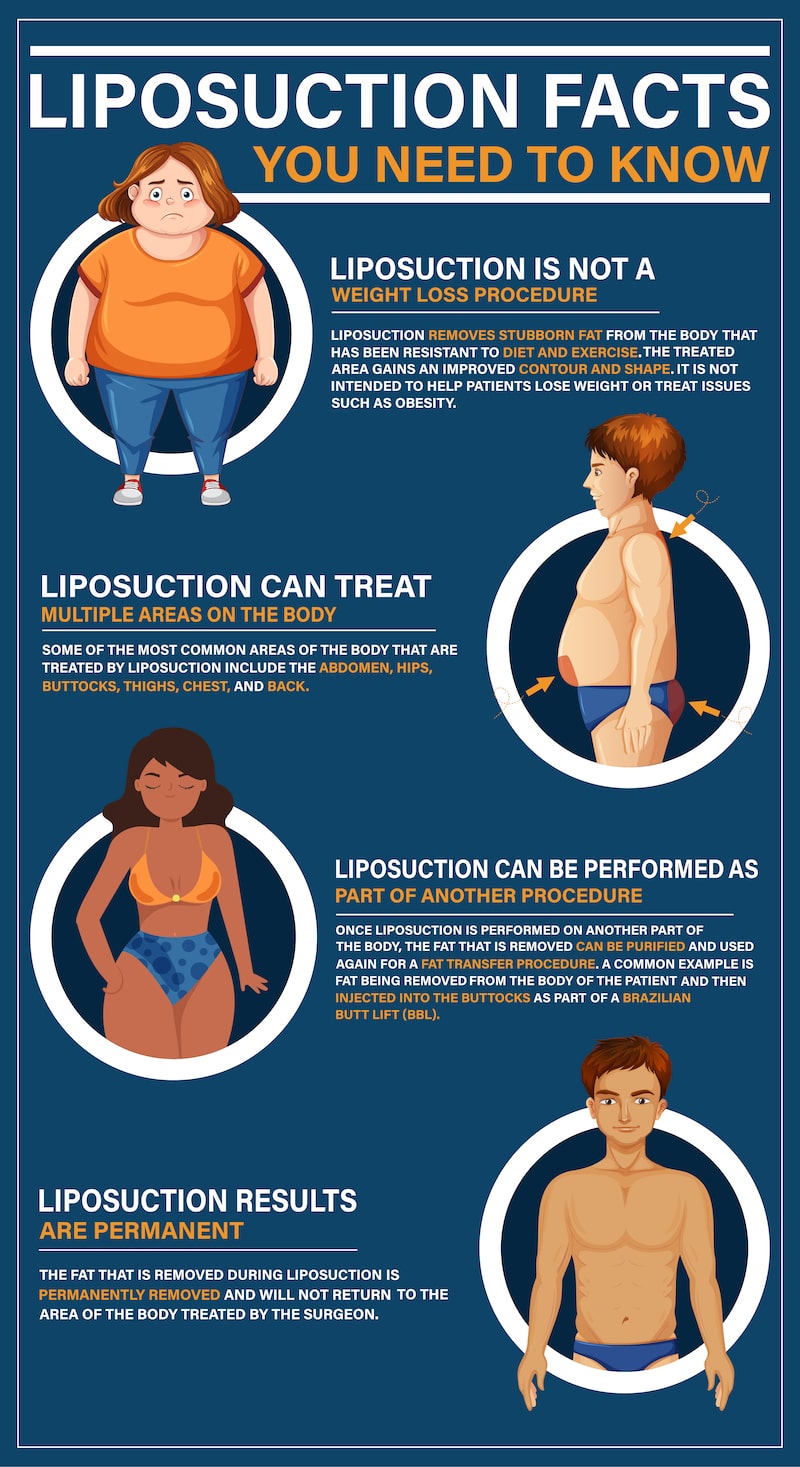
There are times when the body has stubborn fat that does not respond to a diet or exercise plan. In order to eliminate this fat from the body, some patients turn to liposuction to give the body an improved look and contour. Interested in learning how this cosmetic surgery procedure is performed and the results it can provide? The answers can be found in this informative article and our look at lipo starts with liposuction facts patients need to know:

Keep reading for more liposuction information!
Liposuction is an invasive surgical procedure that removes fat from targeted areas of the body. Some of the most popular areas for liposuction include the stomach, thighs, back, neck, and buttocks. Besides eliminating stubborn fat from the body, the contour of the treated area improves as it gains a new shape after the treatment. It can also be performed to reduce extra breast tissue in male patients. and this is a condition known as gynecomastia.
It is important for patients to know that liposuction is not performed as a method to lose weight. Anyone who wants to have the surgery for this reason needs to discuss alternate methods of weight loss with their doctor.
Liposuction is able to reduce the amount of fat cells in a treated area of the body. Once the fat cells are removed, the skin of the patient will mold itself to better reflect the new shape of the area where liposuction was performed. Someone with a good amount of skin tone and elasticity will enjoy a smooth look in the treated area. If the patient has skin that is considered to be thin and not very elastic, the final results of the skin in the treated area can have a look that is loose.
Liposuction is not able to remove stretch marks on the body and it also does not improve the look of skin that is dimpled due to cellulate.
The method in which a liposuction procedure is performed depends on the technique used by the surgeon. The technique is determined by the desired final results, the section of the body to be treated, and the amount of fat cells that will be removed. Here are some of the most common liposuction techniques:
No matter the type of liposuction that is performed, the final results are permanent and the fat that is removed from the body will not return as long as the patient maintains a healthy weight.
Once the procedure is over, there will be some swelling and bruising as well as pain felt by the patient. Each of these conditions will resolve on their own as time passes. The surgeon might place some drains in the body to help remove excess fluid from the body. The patient will also likely need to wear compression garments for a few weeks to help reduce the amount of swelling after the surgery.
Once the swelling goes away, the area treated by the doctor should look slimmer and less bulky. This will also be the time period when the remaining fat settles into its position on the body. It can take three to six months (or more) to see the final results.
There are certain risks associated with liposuction that patients should know about in advance. Common liposuction risks include numbness, irregular contour to the treated area, seroma (buildup of fluid), fat embolism, infection, and a loss of elasticity to the skin.
- MA